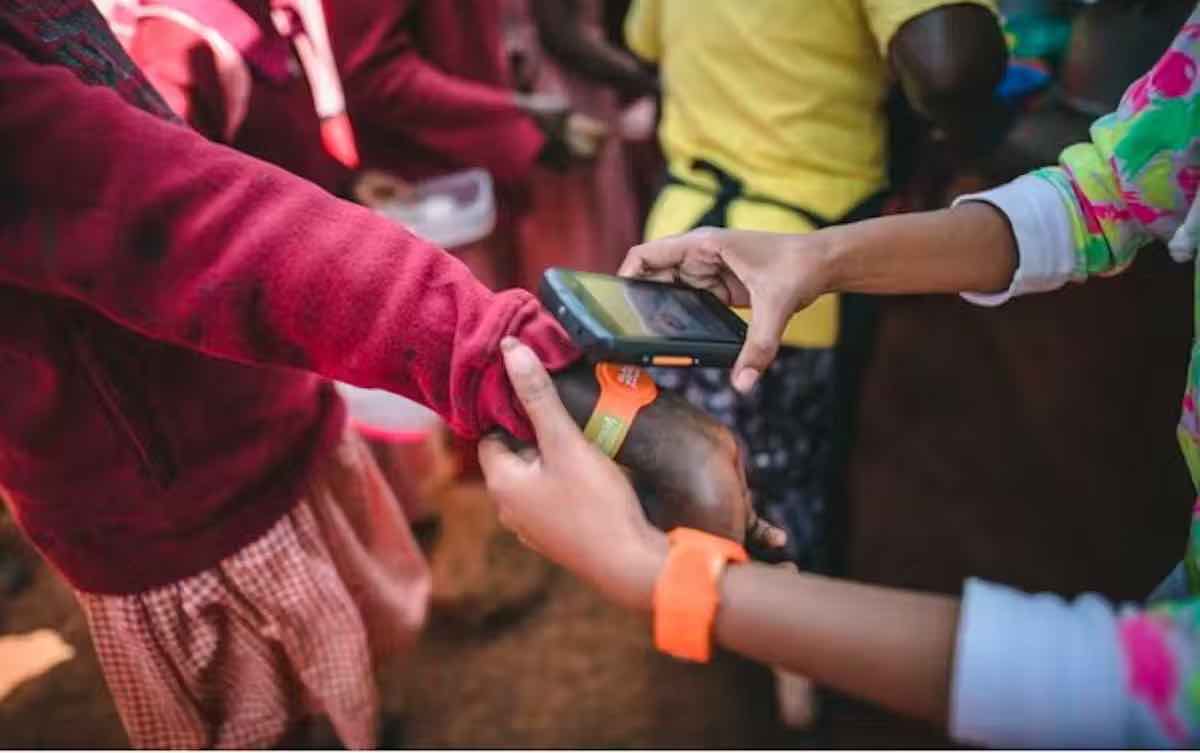More than 250,000 children in public primary schools in Nairobi will receive regular subsidized school meals provided by the county government. The Dishi Na County program is Kenya’s first in an urban setting. The national school meal program set up in 2009 serves more than 1.5 million children in rural drought-affected counties. In this post, first published by The Conversation, Elisheba Kiru of the African Population and Health Research Center, who studies education and empowerment, and IFPRI’s Aulo Gelli, whose focus is food policy and nutrition, analyze the new meal program.
Why are school meals an important intervention?
Households are wrestling with steep increases in living costs brought about by factors like inflation, climate change and the effects of the COVID pandemic. These pressures are felt most by vulnerable populations, particularly those living in dry regions and in informal urban settlements.
There’s a need for innovative solutions using localized, low-tech approaches that improve the quality of life, especially for children.
We have known for several decades about the role of school feeding as a lifeline for children during crises. School feeding results in increased enrollment and improved retention. It also improves cognitive abilities and learning capacity, and reduces absenteeism. The meals provide nutrients necessary for brain development, reducing anemia and stunting, and increasing immunity. These results are even more pronounced for girls and children living in poverty, defined as living on less than a dollar a day.
School meal plans operate in nearly every country in the world, reaching over 400 million children for about $48 billion per year. In Ghana, a study found that the national school feeding program led to a 14% improvement in literacy scores, 13% in mathematics, and 8% in reasoning ability for girls. Impact evaluations in Kenya over two decades ago revealed that supplementing animal source food contributed to children’s cognitive performance, weight gain and height gain. Another study found improvements in the iron status of schoolchildren in Kenya, with meals fortified with whole maize flour.
As of 2018, Kenya’s home-grown school meal program, launched in 2009, covered 1.5 million children in drought-affected lands. The meal program helped learners stay in school, strengthened their physical and mental health outcomes and increased future financial security.
What’s new about the Nairobi initiative?
The Nairobi subsidized meal program aims to provide all pre-primary and grade 1-8 learners in the county’s public schools with a daily school meal. It will serve over 250,000 students and has an annual budget of 1.7 billion KES ($11.8 million).
The Nairobi County government financed the construction of 10 kitchens. They will be operated by Food for Education, a social enterprise with experience in this area. It currently serves 165,000 meals per day in five counties.
The new program provides an opportunity for learning more about school feeding programs and effective approaches to address key challenges in Kenya. These challenges include:
- Equity in making sure students with special needs benefit
- Awareness of food security and nutrition for child development
- Accountability in procurement of food sources and equipment
- Sustainability through zero waste, recycling and green energy.
Some think the program falls short in addressing inequalities among Nairobi’s children. They argue that the initiative overlooks a large population of students living in informal settlements and attending low-cost private schools. Those children are ineligible for the program.
All students deserve school meals and no student should go hungry. The question of eligibility deserves urgent attention to ensure more, not fewer, students are fed.
There are also opportunities to test cost-recovery mechanisms that balance equity and financial sustainability considerations. The national and county level governments could provide farmers and communities with support to encourage local production, through subsidies or cost-sharing.
What needs to be done to make the Nairobi meals program a success?
In our experience, school feeding programs in Africa usually have two limitations. First, they are of limited scale in contrast with the needs. Second, they are fragmented.
The Nairobi program provides opportunities to learn and establish evidence at scale about effectiveness and impact. As part of program monitoring and evaluation, the voices of stakeholders like farmers and community leaders should also be documented to provide an all round perspective. The feedback will also make adjustments possible when they are needed. A strong monitoring and evaluation system can also be used to hold implementers accountable and help governments solicit funding support from development partners.
School meals should strive to provide nutritious diets by serving diverse, safe, palatable, and locally available foods. Governments could explore linking farmers to school feeding programs to encourage local production and a consistent market for produce. As a starting point, developing clear quality standards for school meals across the country, including food, nutrition, and smallholder sourcing requirements, provides the basis to achieve the multiple benefits from the program.
What’s the way forward?
The political class must build on the interdependencies that school feeding creates. For instance, Kenya’s new school curriculum amplifies creativity and problem solving in real-life situations. There’s an opportunity for some public schools with idle land to establish school farms.
To sustain the program, innovative financing and shared responsibility between government and the private sector must be explored. The main incentive for collaborative planning between the government, actors like Food for Education, and others is increased program impact and lowered costs due to improved operational efficiency and economies of scale.
The scaling up of the Dishi Na County program also provides a unique opportunity to generate robust empirical evidence on the costs and benefits of school feeding programs.
Elisheba Kiru is an Associate Research Scientist with the African Population and Health Research Center; Aulo Gelli is a Senior Research Fellow with IFPRI’s Nutrition, Diets, and Health Unit. Liviya David and Ruth Muendo contributed to this article. Opinions are the authors’.







